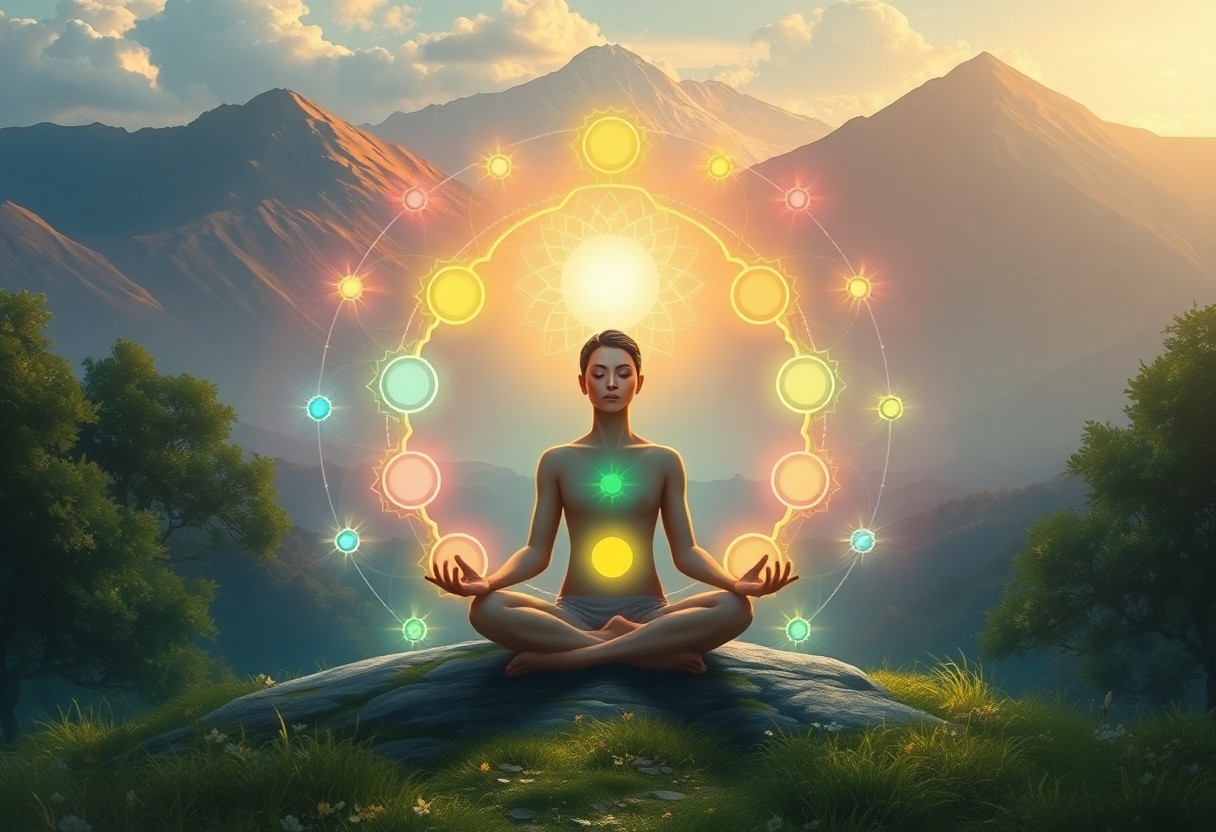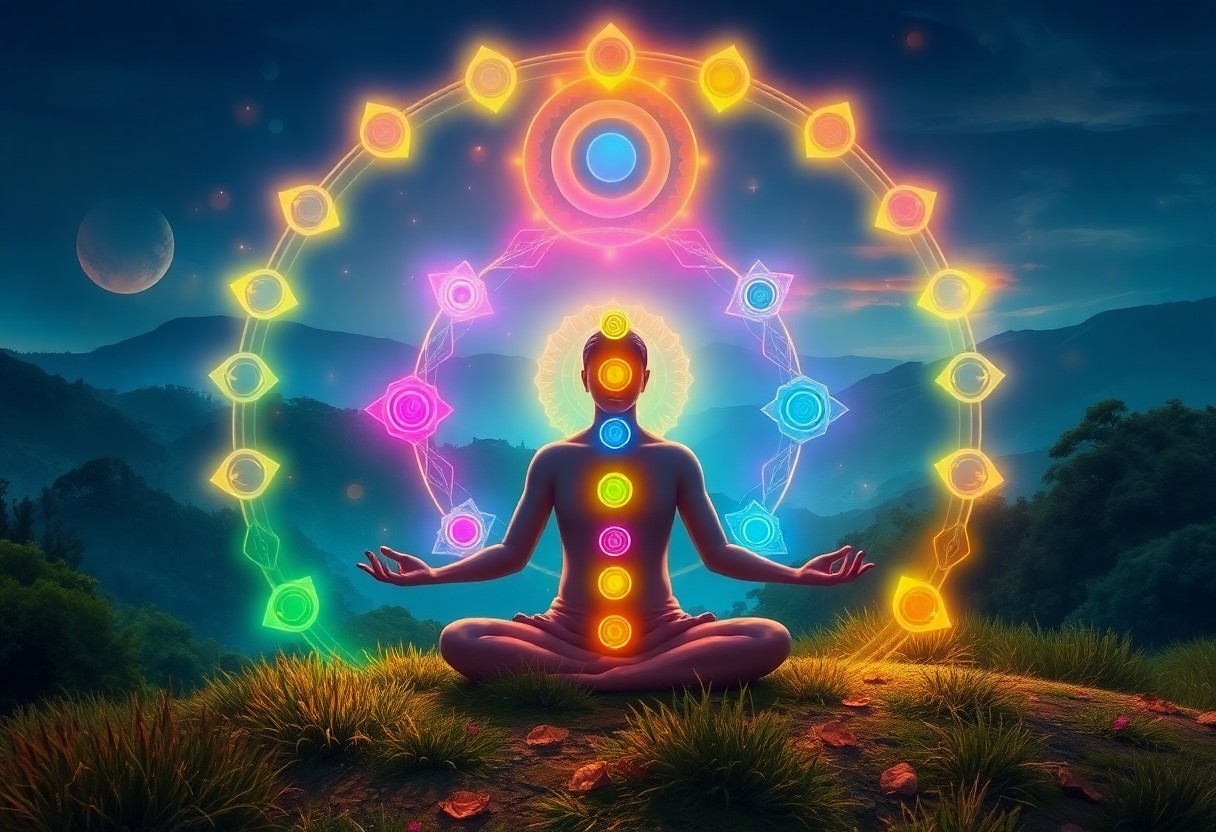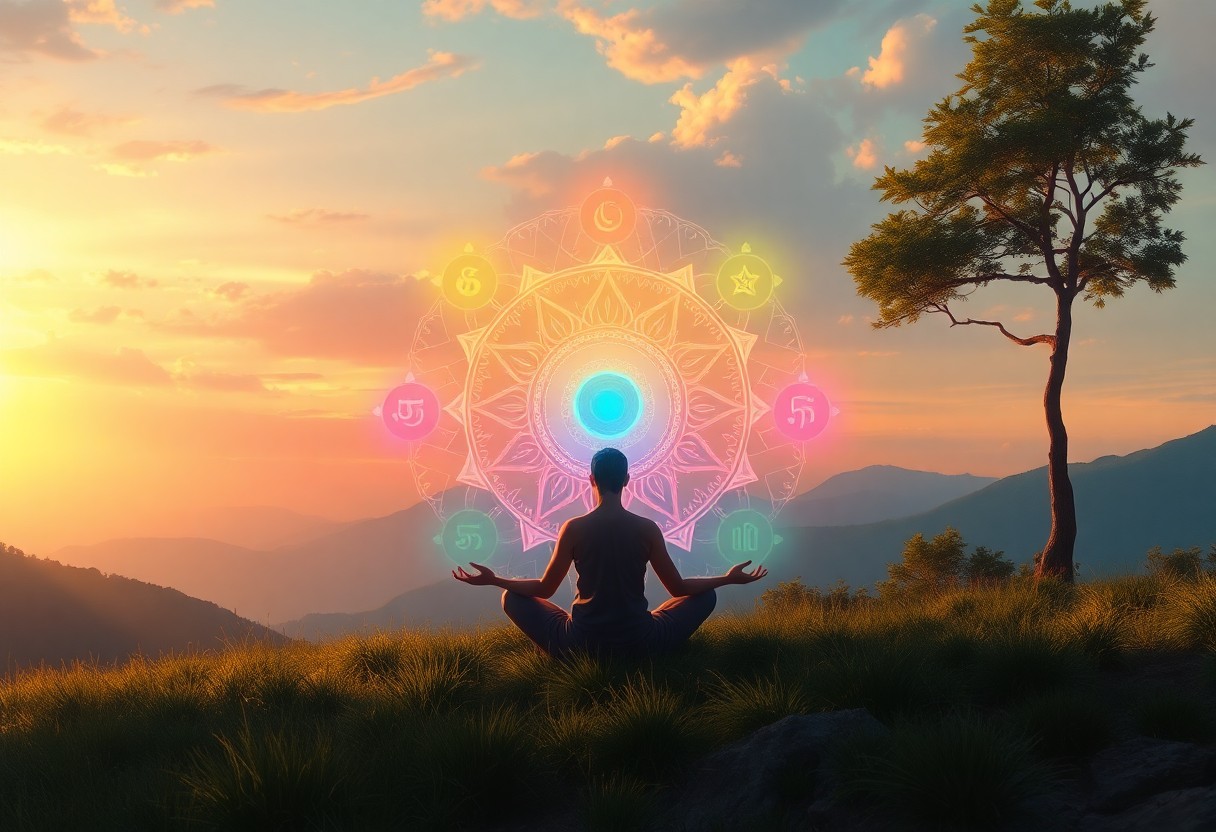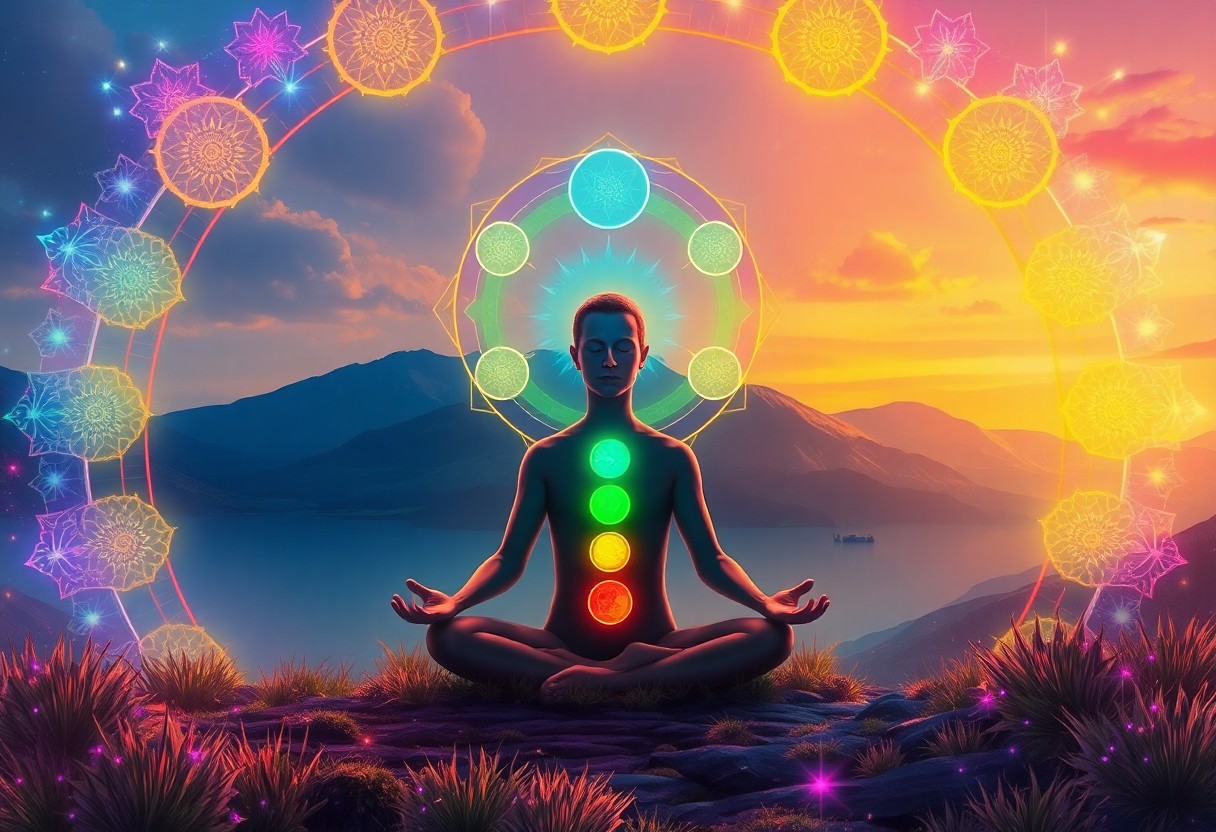It’s imperative to understand how chakra balancing can play a significant role in restoring your inner harmony. This ancient practice focuses on aligning the energy centers within your body, promoting emotional and physical well-being. When your chakras are out of balance, you may experience stress, anxiety, or physical ailments. By learning how to effectively balance these energy points, you can cultivate a sense of peace and stability in your life. Join us as we investigate into the benefits, techniques, and transformative power of chakra balancing.

Key Takeaways:
- Chakra balancing can help promote emotional and physical well-being by aligning the body’s energy centers.
- Practices such as meditation, yoga, and energy healing may facilitate chakra alignment, leading to improved inner harmony.
- Individual experiences and responses to chakra balancing techniques can vary, highlighting the importance of finding the right method for personal needs.

Understanding Chakra
Before you probe into the practice of chakra balancing, it’s necessary to understand what chakras are. These energy centers, believed to exist within your body, facilitate the flow of energy and influence your physical, emotional, and spiritual well-being. By learning about chakras, you can begin to recognize the imbalances that may exist and the importance of restoring harmony within yourself.
The Seven Main Chakras
Chakra refers to the seven main energy centers in your body, each associated with different physical, emotional, and spiritual aspects of your life. These include the Root, Sacral, Solar Plexus, Heart, Throat, Third Eye, and Crown chakras. Each chakra plays a unique role, influencing how you feel, act, and interact with the world around you.
The Role of Chakras in Well-Being
Well-being is significantly influenced by your chakras, as they govern the flow of energy throughout your body. When your chakras are balanced, you experience a sense of peace, clarity, and vitality. Conversely, blocked or imbalanced chakras can lead to a range of issues, including emotional distress, physical ailments, and a diminished sense of purpose.
Consequently, maintaining healthy and balanced chakras is vital for your overall wellness. An imbalance can manifest as stress, anxiety, or physical discomfort, while a harmonious state promotes emotional stability and mental clarity. By engaging in practices aimed at chakra alignment, you can enhance your connection with yourself and foster a healthier, more fulfilling life.
The Concept of Chakra Balancing
Any exploration of chakra balancing begins with an understanding of energy centers within your body. These chakras influence your physical, emotional, and spiritual well-being. By restoring balance among them, you can align your energy and promote harmony throughout your life. To learn more, check out Unlocking Harmony: The Power of Chakra Balancing ….
Methods of Chakra Balancing
With various techniques available, chakra balancing can be achieved through meditation, yoga, vital oils, and crystal healing. Each method offers a unique approach to opening and aligning your chakras, allowing you to choose what resonates best with your energy.
Benefits of Chakra Balancing
By engaging in chakra balancing, you may experience enhanced emotional stability, improved physical health, and a deeper sense of self-awareness. This practice can empower you to navigate life’s challenges with greater ease and resilience.
Understanding the benefits of chakra balancing can lead to profound transformations in your life. When your chakras are aligned, you might feel a surge of positive energy that enhances your overall well-being. This can manifest as increased clarity in thought, improved relationships, and a sense of inner peace. Additionally, chakra balancing may help alleviate stress and anxiety, allowing you to cultivate a more harmonious existence. By prioritizing this practice, you open the door to a more fulfilling life, where your energy flows effortlessly.
Assessing Your Chakra Health
Now that you’ve become aware of chakras, it’s vital to assess your chakra health regularly. By tuning into your physical, emotional, and mental states, you can identify areas that may be out of balance. Observing how you feel in specific situations can reveal valuable insights about your chakra alignment and guide your journey towards restoring inner harmony. Knowledge of your chakra status empowers you to take steps toward holistic well-being.
Symptoms of Imbalanced Chakras
The signs of imbalanced chakras can manifest in various ways, affecting both your physical health and emotional well-being. You may experience fatigue, anxiety, or even physical ailments corresponding to specific chakra locations. Being aware of these symptoms is the first step toward restoring balance and achieving greater well-being in your life.
Techniques for Self-Assessment
For a deeper understanding of your chakra health, consider employing various self-assessment techniques. You can engage in meditation, journaling, or even physical movement practices like yoga, where you connect with your body and spirit. Additionally, you might use crystal healing or vital oils that correspond to specific chakras to further explore their energy and determine your alignment.
Another effective method is to conduct a chakra questionnaire that prompts you to reflect on your emotional and physical states. This can help highlight areas where you’re experiencing discomfort or challenges. You can also practice visualization techniques, envisioning each chakra and assessing the energy flow within them. By using these techniques consistently, you will gain a clearer understanding of your chakra health and the steps you need to take to restore balance and harmony in your life.
Chakra Balancing Practices
To restore your inner harmony, engaging in various chakra balancing practices can be incredibly effective. These methods focus on aligning and energizing your chakras, promoting emotional and physical well-being. By incorporating techniques such as meditation, visualization, yoga, and certain healing modalities, you can work towards a more balanced and harmonious state of being. Each practice offers a unique approach to help you tap into your body’s energy system.
Meditation and Visualization
An effective way to balance your chakras is through meditation and visualization techniques. These practices allow you to focus on each energy center, helping you identify and release any blockages or negative energy. By visualizing vibrant colors associated with each chakra, you can enhance your awareness and draw in positive energy, fostering a sense of peace and alignment in your spirit.
Yoga and Movement
By engaging in yoga and movement, you can create a powerful connection between your body and mind, facilitating chakra balance. This practice incorporates physical postures, breathing exercises, and meditation, which together help to open and align your chakras. Yoga encourages you to focus on your breath, allowing energy to flow freely through your body while strengthening your physical form. Certain poses target specific chakras, effectively releasing tension and promoting relaxation. Whether you choose to practice in a class or at home, yoga’s transformative nature can help you achieve a deeper state of inner harmony.
The Science Behind Chakra Balancing
Many believe that chakra balancing can lead to improved mental, emotional, and physical well-being. This holistic approach emphasizes the alignment of energy centers within the body, promoting a sense of harmony. By utilizing various techniques such as meditation, yoga, and vital oils, you may enhance your overall energy flow and allow healing to occur. Understanding the science behind these practices can help you appreciate the potential benefits they may bring to your life.
Research and Studies
The exploration of chakra balancing has sparked interest in various scientific communities, prompting studies that examine its impact on well-being. While traditional science often treats energy systems skeptically, anecdotal evidence suggests that practices aimed at balancing chakras can enhance stress reduction, emotional regulation, and overall quality of life. You may find that these practices foster a greater connection to your own body and mind, allowing for improved self-awareness and resiliency.
Critiques and Skepticism
Between traditional medicine advocates and holistic practitioners, differing views about chakra balancing emerge, often leading to skepticism. While some argue that scientific validation is necessary, others find value in personal experiences. You may encounter critiques suggesting that chakra systems lack empirical evidence; however, integrating body awareness techniques may still provide positive outcomes for you.
Critiques of chakra balancing frequently highlight the absence of empirical evidence supporting its foundational principles. Many critics assert that without rigorous scientific validation, chakra healing is merely an alternative practice lacking credibility. However, you should also consider the significance of personal experience and the emotional shifts individuals report after engaging in chakra balancing. Critics point to the risk of individuals foregoing traditional medical treatment in favor of these practices, which can be dangerous. Despite these concerns, proponents argue that when integrated wisely, chakra balancing could promote personal growth and emotional healing.

Integrating Chakra Balancing into Daily Life
After exploring chakra balancing, you may wonder how to seamlessly incorporate it into your daily routine for lasting benefits. Start by setting aside a few moments each day to focus on your chakras, integrating practices like meditation, yoga, or mindful breathing. Consistency is key, as daily engagement allows you to develop a deeper connection with your energy centers, ultimately enhancing your inner harmony and overall well-being.
Creating a Daily Routine
Life can be hectic, but prioritizing a daily chakra balancing routine can have profound effects on your mental and emotional health. Consider incorporating simple practices like morning affirmations, a brief meditation session, or evening stretches focusing on specific chakras. By establishing this routine, you create a sacred space to nurture your body and spirit, helping you maintain balance amid life’s challenges.
Resources and Support
Resources like books, online courses, and apps can provide additional insights into chakra balancing techniques. Seek out community groups, workshops, or local practitioners to connect with others who share your journey toward harmony. Engaging with these resources not only enhances your practice but also provides access to support systems that keep you motivated.
Daily practice is necessary in fully embracing chakra balancing. Access quality books that explore into the intricacies of chakras, join online forums for discussions and advice, or participate in local workshops to learn practical techniques. Connecting with community practitioners can also provide you with personalized guidance, making your journey more effective and enriching. Implement these resources into your routine to strengthen your commitment, and joyfully pursue your path to inner harmony.
Final Words
Summing up, exploring chakra balancing can offer you a pathway to restore your inner harmony and enhance your overall well-being. By understanding and working with your energy centers, you can address emotional blockages and cultivate a sense of peace within. Incorporating practices such as meditation, yoga, or energy healing can align your chakras, ultimately leading to improved physical and emotional health. Engaging with these holistic approaches invites you to take charge of your well-being and fosters a deeper connection to yourself.
FAQ
Q: What is chakra balancing?
A: Chakra balancing is a holistic practice aimed at aligning the body’s energy centers, known as chakras. Each of the seven chakras corresponds to different physical, emotional, and spiritual aspects of our lives. Through various techniques such as meditation, yoga, sound therapy, or healing crystals, chakra balancing seeks to restore the natural flow of energy, promoting overall well-being and inner peace.
Q: How do imbalances in chakras affect inner harmony?
A: When chakras are imbalanced, it can lead to a range of issues, including emotional distress, physical ailments, and a sense of disconnection from oneself or others. Each chakra is tied to specific emotions or areas of life. For example, an imbalance in the heart chakra might manifest as difficulty in forming relationships, while a blocked throat chakra could impair self-expression. Restoring balance can thus foster a sense of harmony by alleviating these issues and enhancing emotional and spiritual clarity.
Q: What techniques are effective for chakra balancing?
A: Several techniques can facilitate chakra balancing. Meditation focuses on centering the mind and connecting with the energy centers, while yoga postures are designed to open and balance specific chakras. Sound therapy, which includes chanting or listening to specific frequencies, can also help harmonize chakra energies. Additionally, using healing crystals aligned with each chakra may enhance the balancing process, providing a physical and energetic tool to facilitate alignment.
Q: Can anyone practice chakra balancing, or do you need special skills?
A: Anyone can practice chakra balancing, regardless of their background or experience level. While working with a trained practitioner can provide guidance and deeper insights, individuals can also learn techniques for self-balancing through books, online courses, or workshops. It is important to approach the practice with an open mind and a willingness to explore one’s inner self, making it accessible to all interested in enhancing their well-being.
Q: How can I tell if chakra balancing is working for me?
A: Signs that chakra balancing is effective can vary from person to person. You may notice improvements in emotional stability, better relationships, increased energy levels, or enhanced intuition. Physical symptoms related to chakra imbalances may lessen, as well. Keeping a journal to reflect on your feelings and experiences after sessions can help track your progress and identify shifts in your well-being, indicating that the practice is positively impacting your inner harmony.
Discover more from NatureZen Market
Subscribe to get the latest posts sent to your email.











